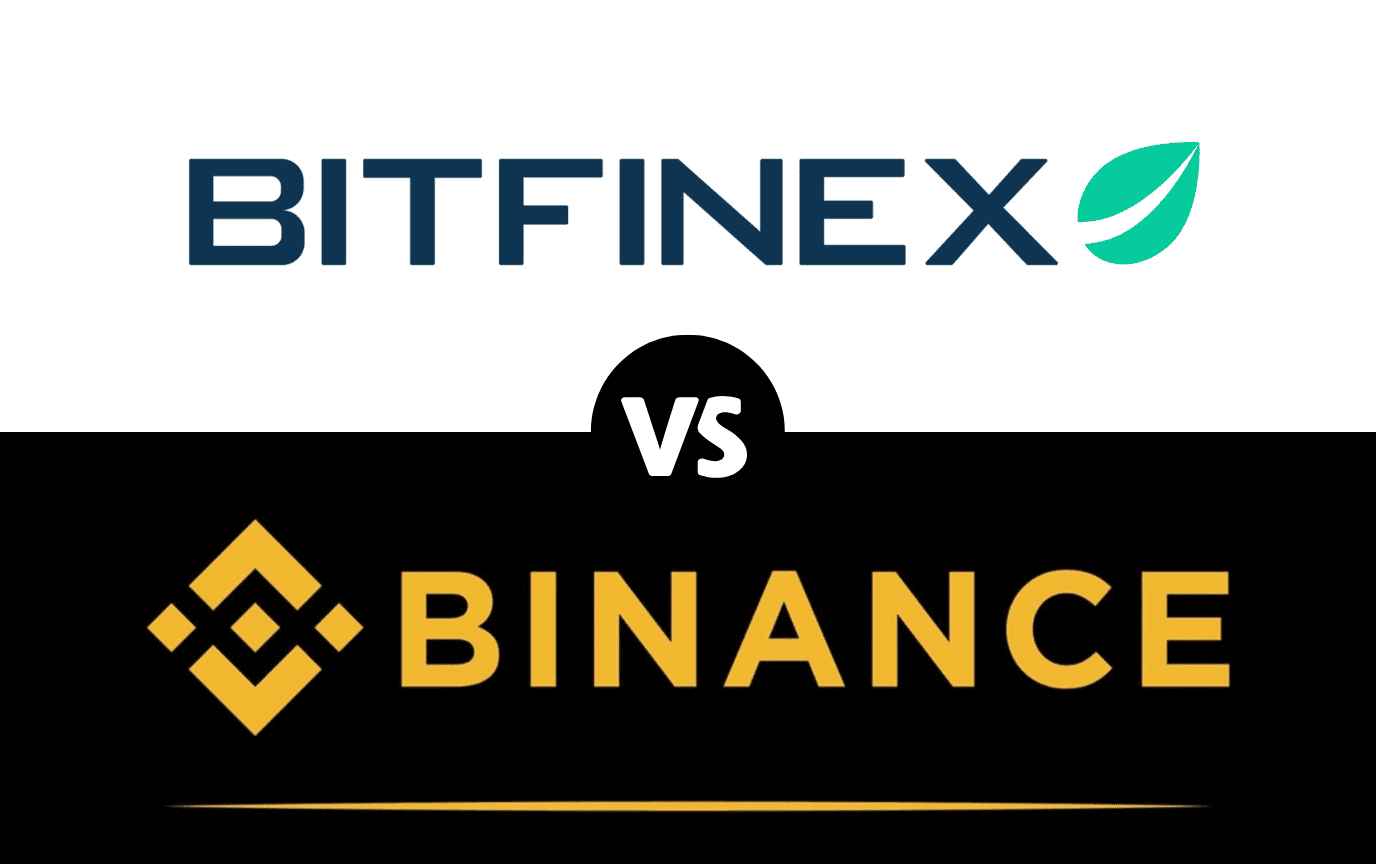In the fast-evolving world of cryptocurrency, selecting the right crypto trading platform can significantly impact your success as a trader. Two heavyweights in the industry, Bitfinex and Binance, consistently rank among the top exchanges, offering robust tools and services for crypto enthusiasts. This “Bitfinex vs Binance” comparison dives into their trading fees, platform features, security measures, and user experiences to help you decide which exchange aligns with your trading goals in 2025. Whether you’re a beginner seeking simplicity or an advanced trader chasing leverage, this detailed crypto exchange comparison has you covered.
Both platforms have carved out distinct niches—Bitfinex as a haven for professional traders and Binance as a versatile, user-friendly giant. But which one comes out on top in this Bitfinex vs Binance showdown? Let’s explore the key differences and similarities to find out.
Overview of Bitfinex and Binance
What is Bitfinex?
Founded in 2012 in Hong Kong and now based in the British Virgin Islands, Bitfinex is one of the oldest crypto exchanges. It’s renowned for catering to experienced traders with advanced tools like margin trading and derivatives. Supporting over 170 cryptocurrencies and 335+ trading pairs, Bitfinex prioritizes liquidity and technical prowess, though its history of regulatory scrutiny and a major hack in 2016 have shaped its reputation.
What is Binance?
Launched in 2017 by Changpeng Zhao (CZ), Binance quickly rose to become the world’s largest exchange by trading volume. Based in Malta after moving from China, it supports over 400 cryptocurrencies and 1,200+ trading pairs. Known for its low trading fees and extensive features, Binance appeals to a broad audience, from beginners to institutional traders, despite facing its own regulatory challenges.
Trading Fees: Bitfinex vs Binance Breakdown
Bitfinex Fee Structure
In this Bitfinex vs Binance comparison, fees are a critical factor. Bitfinex uses a maker-taker model based on 30-day trading volume:
- Maker Fees: 0.10% (drops to 0.00% above $30 million).
- Taker Fees: 0.20% (drops to 0.055% for high volumes).
- Margin Funding: Varies based on peer-to-peer rates.
- Deposits: Free for crypto; fiat deposits (e.g., USD, EUR) start at 0.1% ($60 minimum).
- Withdrawals: Crypto fees vary (e.g., 0.0004 BTC); fiat withdrawals cost 0.1% ($60 minimum).
Bitfinex’s fees are competitive for pros but higher than Binance’s base rates, especially for casual traders.
Binance Fee Structure
Binance excels in offering low trading fees, a key highlight in this crypto exchange comparison:
- Spot Trading: 0.10% for makers and takers, reduced to 0.075% with Binance Coin (BNB) payments (25% discount).
- Futures: 0.02% maker, 0.05% taker (10% off with BNB).
- VIP Tiers: Fees drop to 0.00% maker and 0.01% taker for volumes over $250 million.
- Deposits: Free for crypto; fiat varies by method (e.g., 1.8% for card deposits).
- Withdrawals: Low and asset-specific (e.g., 0.0002 BTC).
Binance’s affordability gives it an edge in the Bitfinex vs Binance fee contest, especially for frequent traders.
Platform Features: Bitfinex vs Binance
Bitfinex Features for Traders
Bitfinex’s platform features cater to advanced users:
- Margin Trading: Up to 10x leverage on spot trades.
- Derivatives: Futures and perpetual swaps with up to 100x leverage.
- Lending: Earn interest by lending crypto to margin traders.
- Advanced Tools: Spread Ladder, REST/Websocket APIs, and TradingView integration.
- Staking: Supports 10+ assets with variable APYs (e.g., 5%–10%).
With 335+ trading pairs, Bitfinex offers solid variety but trails Binance in sheer volume of options.
Binance Features for Traders
Binance’s extensive platform features make it a standout in this Bitfinex vs Binance comparison:
- Spot Trading: Over 1,200 trading pairs across 400+ cryptocurrencies.
- Futures: Up to 125x leverage with a vast futures market.
- Staking and Earn: 100+ assets with yields up to 15% APY.
- NFT Marketplace: Buy, sell, and mint NFTs.
- Trading Bots: Grid trading and DCA bots for automation.
- Binance Smart Chain: Access to DeFi and dApps.
Binance’s versatility—from trading to passive income—gives it broader appeal than Bitfinex’s pro-focused toolkit.
Security: Comparing Safety Measures
Bitfinex Security
Security is pivotal in any crypto exchange comparison. Bitfinex has faced challenges:
- 2016 Hack: Lost 119,756 BTC ($72 million then), repaid via BFX tokens.
- Current Measures: 95% cold storage, 2FA (YubiKey supported), IP whitelisting, and regular audits.
- Regulatory Issues: Fined $18.5 million by NYDFS in 2021 for Tether-related transparency lapses.
Despite its history, Bitfinex has bolstered security, making it a secure crypto trading option today.
Binance Security
Binance also has a mixed security track record:
- 2019 Hack: Lost $40 million, covered by its SAFU fund.
- Current Measures: 90% cold storage, SAFU ($1 billion+ emergency fund), 2FA, and AI-driven monitoring.
- Regulatory Scrutiny: SEC lawsuit in 2023 for securities violations; operates Binance.US separately.
Binance’s proactive fund protection and transparency edge it slightly ahead in this Bitfinex vs Binance security face-off.
User Experience: Ease of Use Compared
Bitfinex User Experience
Bitfinex’s interface is tailored for pros:
- Desktop: Complex but powerful, with advanced charting and order types.
- Mobile: Functional (4.5/5 on App Store), though less intuitive than Binance’s app.
- Support: 24/7 live chat and email; response times vary (mixed Trustpilot reviews, 3.2/5).
Its learning curve can intimidate beginners, a notable point in this Bitfinex vs Binance comparison.
Binance User Experience
Binance prioritizes accessibility:
- Desktop: Basic and Advanced views cater to all levels; clean and responsive.
- Mobile: Highly rated (4.7/5), with full trading and staking functionality.
- Support: 24/7 chat, email, and extensive help center; generally faster than Bitfinex (4.1/5 on Trustpilot).
Binance’s smoother user experience gives it an advantage for novices and casual traders.
Accessibility and Availability
Bitfinex Availability
Bitfinex serves 100+ countries but excludes the U.S., Canada, and sanctioned regions (e.g., Iran, Syria). Full fiat support (USD, EUR, JPY, GBP) requires KYC, which can take days.
Binance Availability
Binance operates globally in 180+ countries, with Binance.US for U.S. users (fewer features). It supports 40+ fiat currencies via P2P and third-party gateways. KYC is mandatory but streamlined.
Binance’s wider reach makes it more accessible in this crypto exchange comparison.
Bitfinex vs Binance: Pros and Cons
Bitfinex Pros and Cons
- Pros:
- Advanced trading tools (margin, derivatives, APIs).
- High liquidity for major pairs.
- Competitive fees for high-volume traders.
- Cons:
- No U.S. access.
- Steep learning curve.
- Past security and regulatory issues.
Binance Pros and Cons
- Pros:
- Low trading fees with BNB discounts.
- Vast coin and feature selection.
- Beginner-friendly with global reach.
- Cons:
- Regulatory uncertainty in some regions.
- Overwhelming options for newbies.
- Binance.US limitations.
Who Should Choose Bitfinex vs Binance?
Ideal Bitfinex Traders
- Advanced Traders: Leverage, lending, and APIs suit pros.
- Non-U.S. Users: Full access outside restricted regions.
- Liquidity Seekers: Tight spreads on major pairs.
Ideal Binance Traders
- Beginners: Low fees and simple interface.
- Altcoin Enthusiasts: Unmatched variety.
- Global Users: Broad availability and fiat options.
Bitfinex vs Binance Comparison Table
| Feature | Bitfinex | Binance |
|---|---|---|
| Spot Fees | 0.10%/0.20% | 0.10%/0.10% (0.075% w/ BNB) |
| Futures Fees | Varies (up to 100x) | 0.02%/0.05% (up to 125x) |
| Coins | 170+ | 400+ |
| Trading Pairs | 335+ | 1,200+ |
| U.S. Access | No | Yes (Binance.US) |
| Staking | 10+ assets | 100+ assets |
| Security | Strong (past hack) | Strong (SAFU fund) |
| Ease of Use | Advanced-focused | Beginner-friendly |
Conclusion: Bitfinex vs Binance—Which Wins in 2025?
This Bitfinex vs Binance comparison reveals two powerhouse exchanges with distinct strengths. Bitfinex shines for advanced traders outside the U.S., offering deep liquidity, margin trading, and technical tools at competitive fees for high volumes. Its secure crypto trading environment has recovered from past setbacks, but its complexity and regional limits narrow its appeal.
Binance, however, dominates as a versatile, affordable option. Its low trading fees, vast cryptocurrency selection, and user-friendly design make it the best choice for most traders—beginners and pros alike. With global accessibility, innovative features, and a robust SAFU fund, Binance edges out Bitfinex in this crypto exchange comparison for 2025.
Ultimately, your choice depends on your priorities. Need advanced tools and don’t mind the learning curve? Bitfinex is worth it. Want low costs, variety, and ease? Binance is your go-to. Test both with small trades to see which fits your secure crypto trading needs.
If you’re curious to learn more, don’t hesitate to check out other helpful categories on Exchainer. You can dive into Crypto 101, explore Exchange Reviews, get the latest updates in News, or find the best tools and wallets in Tools and Wallets. Happy learning and stay safe out there!






